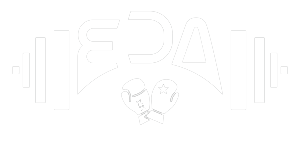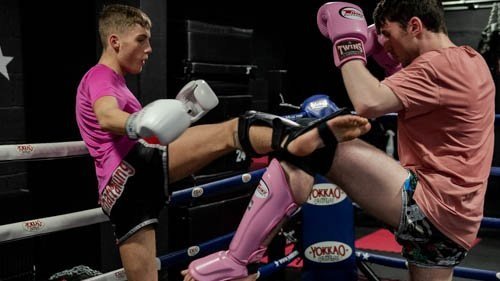Understanding Muay Thai - The Art of 8 Limbs
What is Muay Thai?
Muay Thai: Originating in Thailand around the 13th century, Muay Thai, also known as “Thai Boxing,” has a rich history linked to the Sukhothai Kingdom. Esteemed as the national sport of Thailand, it diverges from other combat sports by utilizing 8 points of contact—punches, elbows, knees, and kicks—earning the nickname "The Art of 8 Limbs."
Evolution into a Modern Combat Sport Muay Thai evolved from Muay Boran, an ancient martial art, undergoing significant changes in the early 20th century. Influenced by British boxing, Muay Thai adopted codified rules and the boxing ring, with fighters transitioning from hand ropes to boxing gloves.
Techniques and Traditions Characterised as a stand-up striking sport, Muay Thai involves clinching, sweeps, and throws. Notably, it retains traditional elements like the pre-fight dance ritual (Wai Kru Ram Muay), the head dress (Mongkon), and the Sarama music that sets the tone for each bout.
The Rich History of Muay Thai
Origins in Warfare Tracing back to the Sukhothai dynasty, Muay Thai's roots are in military combat. The legend of Nai Khanom Tom, who defeated 9 Burmese fighters consecutively during his imprisonment, epitomizes its historical significance and martial prowess.
National Sport and Cultural Icon Formalised as a national sport during the Rattanakosin Kingdom era, Muay Thai incorporates elements from its ancient predecessor, Muay Boran, evolving to exclude potentially lethal techniques. It stands today as a symbol of Thai culture and a celebrated combat art globally.
Muay Thai Today: A Global Phenomenon
Modern Adaptations Modern Muay Thai, popular since World War I, includes traditional boxing elements, like padded gloves and timed rounds, while preserving its unique strikes and techniques.
Lumpinee and Rajadamnern stadiums in Bangkok are prestigious venues for aspiring fighters. Training in Muay Thai involves mastering various techniques, from basic stances and movements to complex combinations and defense strategies.
The Techniques of Muay Thai
Fundamentals of Attack and Defense Muay Thai training emphasises constant practice, turning techniques into muscle memory. From punches and kicks to knee strikes and clinches, each move requires precision and power, with variations adding to its effectiveness.
Improving Skills Professional fighters in Thailand train rigorously, often from a very young age. Success in Muay Thai demands dedication, with cardio and strength training being key components alongside technique drilling.
The Many Benefits of Muay Thai
Fitness, Self-Defense, and Mental Strength Muay Thai is not just a competitive sport but a comprehensive fitness regime. It's excellent for calorie burning, self-defense, and mental toughness. Practitioners of all ages find in Muay Thai a way to improve physical fitness, gain self-confidence, and enjoy the endorphin rush post-training.
Cultural Significance and Accessibility The sport also connects practitioners to Thai culture and traditions, enhancing social connections in a gym setting. Muay Thai's straightforward techniques make it accessible to beginners, offering a fun and engaging alternative to traditional fitness routines.
Muay Thai vs. Other Combat Sports
Distinct from Boxing and MMA Muay Thai stands apart from western boxing with its range of techniques and from MMA due to its focus on stand-up striking. It's an ideal complement to other martial arts and a valuable skill in mixed martial arts.
Embracing Muay Thai: Training and Competition
Training and Fight Attire Muay Thai training is casual, with fighters typically wearing shorts and a tank top or t-shirt. In professional fights, traditional attire and rituals like wearing the Mongkhon and performing the Wai Kru Ram Muay are observed.
Rules and Regulations Muay Thai fights are governed by a set of rules that ensure safety and fairness. Understanding these rules is crucial for competitors and enhances the experience for spectators.
The Art and Sport of Muay Thai
Muay Thai is more than just a martial art or a sport; it's a cultural heritage, a form of fitness, and a way of life. Embracing both tradition and modernity, it continues to grow in popularity, offering a unique blend of physical challenge, mental discipline, and cultural richness.
Embrace the Muay Thai Journey at Everyday Athlete Gym
As you've journeyed through the rich history, dynamic techniques, and transformative benefits of Muay Thai, it's clear that this martial art offers more than just physical fitness—it's a pathway to mental resilience, cultural appreciation, and personal growth. Now, the opportunity to immerse yourself in the world of Muay Thai awaits at your doorstep with Everyday Athlete Gym.
Join Our Thai Boxing Classes Today! Whether you're a beginner eager to learn the basics or an experienced practitioner looking to refine your skills, Everyday Athlete Gym provides a welcoming, supportive environment tailored to all levels. Our expert trainers, steeped in the traditions and modern practices of Muay Thai, are dedicated to guiding you through each punch, kick, and strategy, ensuring a fulfilling and empowering experience.
Transform Your Fitness Routine into an exhilarating journey of self-discovery and physical prowess. Our Muay Thai classes are not just about learning martial arts; they're about joining a community of fitness enthusiasts who value strength, discipline, and mutual respect.
Take the First Step Ready to embark on this exciting journey? Visit us at Everyday Athlete Gym's Muay Thai Classes to learn more and sign up. Your path to becoming a stronger, more confident, and disciplined individual starts here. Embrace the challenge, join our community, and redefine your fitness goals with the art of Muay Thai at Everyday Athlete Gym. See you in the ring!



